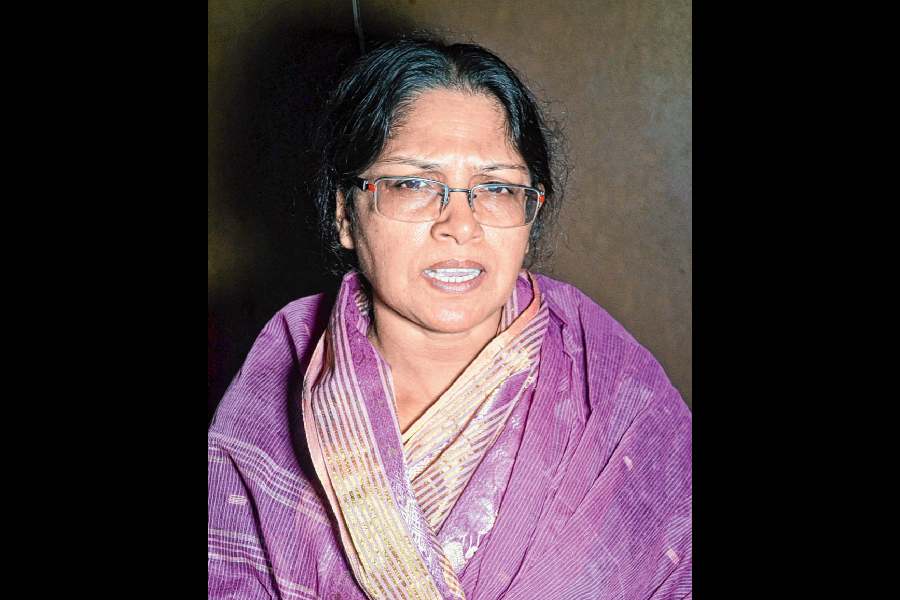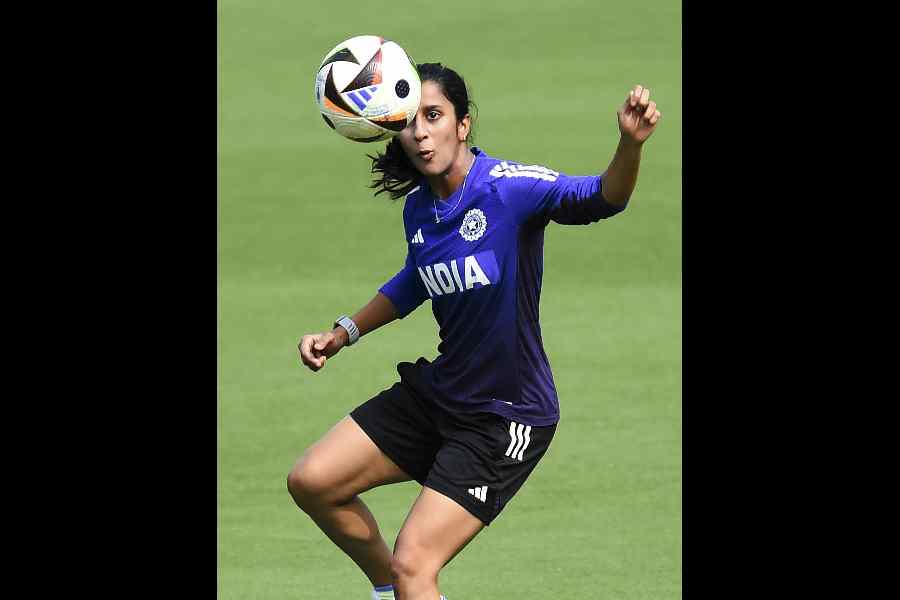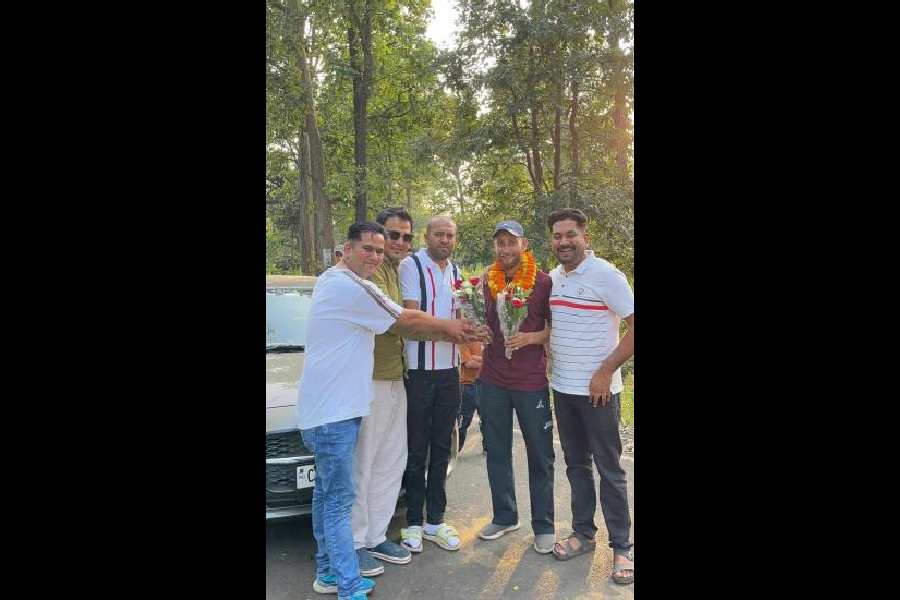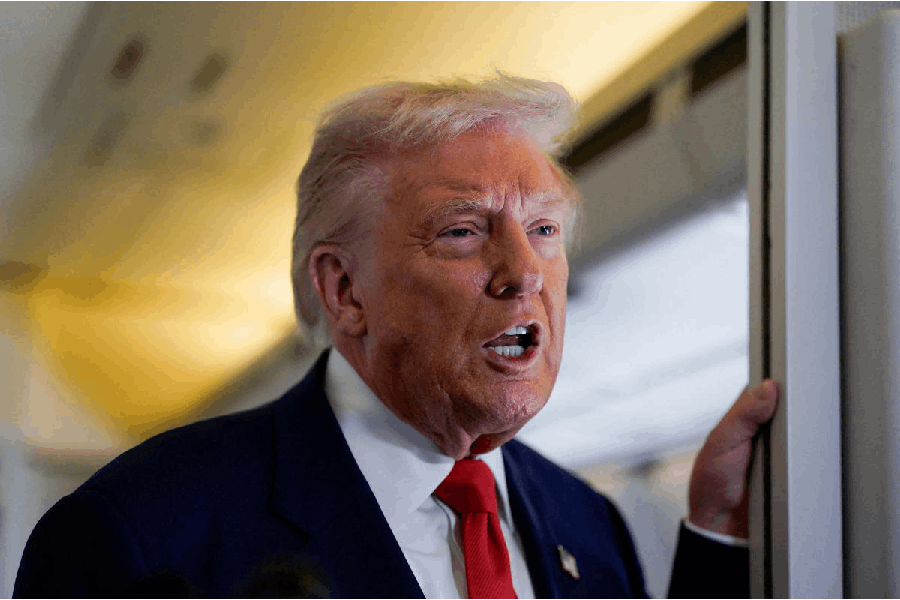 |
| Sitar maestro Debu Chaudhuri appreciates his son Prateek’s efforts to reach out to a wider audience via the Internet |
Is Prateek Chaudhuri following in his father’s footsteps? The answer is yes and no. The deeply committed young musician has released three albums and he appears on stage making music along with his sitar maestro father Debu Chaudhuri at concerts that can also be watched online.
But Prateek is doing more than taking a leaf from his father’s music book. He’s working overtime on tasks like re- designing websites for himself and his father. At the same time he’s also painstakingly documenting his father’s old compositions and ensuring that some of their concerts are available on YouTube. In addition, he’s juggling his role as a music professor at Delhi University.
“How would I imagine there are powerful tools to reach out to a wider audience,” says Debu, as he plucks the strings of his sitar at his home in Delhi’s Chittaranjan Park. Debu confesses that he’s quite taken aback by his son’s multi-tasking abilities. “He is much more efficient than I am. And so energetic,” he says.
 |
| Violinist L. Subramanium has found that performing with his children pulls in younger audiences. (Below) His children Narayan, Ambi and Seetaa |
 |
Santoor maestro Pandit Bhajan Sopori felt a similar thrill when he watched his recent concert in Maryland on YouTube. The concert had been uploaded by his son Abhay Rustum Sopori, 29. “Yes, my father was astonished at the prospect of our music being accessible to people anywhere in the world,” says Abhay, who also plays along with his father and who has released 10 albums.
In the world of Indian music, sons and even daughters still follow their fathers into the family trade. But the children are making their way through the world of music — and perpetuating their fathers’ legacies — in a way that often takes their parents by surprise.
Take a look at Zunain Khan, the son of sitar maestro Halim Jaffer Khan who has recently started online music classes with students in Australia with the help of a webcam. “The sound system can be a problem at times but I have managed well so far,” says the 36-year-old sitar player, whose father belongs to Indore’s Bande Ali gharana.
Zunain started learning the sitar from his father when he was a five-year-old toddler. “I played the instrument and when he taught students I would sit through most sessions,” says Zunain, who has cut one album and is currently working on a second.
For the older musicians it’s obviously gratifying to see their work being taken forward by their children. One such is 75-year-old sarod player Buddhadev Das Gupta, whose son Anirban has carved out a niche for himself in the world of music imbibing his father’s style and adding to it his own touches. Anirban’s an IT professional, who also plays music professionally and is now working in New York.
 |
| Abhay Rustum ensures that he and his father, santoor maestro Bhajan Sopori, turn out smartly dressed for concerts. Pix by Jagan Negi |
Buddhadev is clearly impressed by his son’s ability to juggle the different elements in his life. “His approach to music is the same as mine. He did his studies and did not waste a single minute. He was unsocial like me. He is efficient and his work in technology has enlivened his music,” says Das Gupta, who’s now used to fielding queries about his son and how he manages being a software engineer and a musician.
The new generation is different in one obvious way — technology. Abhay, for instance, has upgraded his father’s website and is putting in all the latest conceivable technological upgrades.
“It will be interactive with provision for audio and visual for music enthusiasts to download their favourite recitals,” says Abhay. There’ll also be a special page with instructions on how to learn music.
Abhay has also begun the mammoth task of documenting his father’s work. During the last five decades, Sopori senior has put together more than 5,000 compositions but only 80 were recorded. Today, at 60, Sopori feels the need to document his work.
The younger Sopori is changing things in other ways too. He’s extremely media savvy and image conscious and ensures that he and his father are smartly dressed on stage — they both come on wearing hand-embroidered shawls and kurtas made specially for them in Kashmir. “Presentation and image is important when on stage,” says Abhay.
Prateek is equally conscious of his wardrobe. His well-starched wrinkle-free kurta and matching kolhapuris say it all. “Prateek is efficient when it comes to work and other details that concern music,” says his father.
 |
 |
| Sarod exponent Buddhadev Das Gupta is impressed by his son Anirban’s (top) ability to juggle an IT job and his music. Pix by Jagan Negi |
Then, there is the world famous violinist Dr L. Subramanium who says that his hectic travel schedules have never allowed him to document his work. Now, his 20-year-old daughter Seetaa is taking charge of this task. “It’s a tough job,” says Seetaa, who’s supervising a team of experts working on a website and a music catalogue for her father.
“There is so much output but we have not been able to put it together because we were travelling all the time,” says Subramanium.
Subramanium’s legacy is being carried on in different ways by his children. His 16-year-old son Ambi plays the violin like his father. The two older children Seetaa, 20, and Narayan, 21, are both classical singers.
It can be an advantage having youngsters — whether it’s Ambi, Seetaa or Narayan — onstage. Subramanium has found that having his children on the bill seems to pull in younger crowds.
Even on stage, these young musicians are quite different from their fathers. For instance, take Abhay who is quite the entertainer. Unlike his father who was only an instrumentalist, Abhay is also a vocalist and sings during recitals. “This, to me, is quite a unique combination to be able to play and sing as well,” says Sopori senior.
Or look at Prateek who often startles his audiences with what’s called his ‘fast track’ technique. “He is giving a new dimension to the performance. He has a different sound production,” says Debu. Prateek’s ‘fast’ technique is a combination of intricate taals and he also uses a ‘pick-up’ mike when he plays the instrument.
This is done especially when he plays fusion music so the sound of sitar is not lost amidst the other accompanying instruments. Again, this is something his father never did in his time. Debu has done fusion music but never thought of using a pick-up mike that would amplify or magnify the sound of the sitar. “But when I play classical, I tone it down,” says Prateek.
The youngsters are different in other ways too — and their approach is probably more suited to the modern age. Abdul Halim Jaffer Khan points out that his son has a different relationship with his students. “It’s more than a teacher and disciple bond and it’s almost like a friend teaching another friend,” says the father.
The new generation also would never dream of letting a performance go unrecorded — in earlier decades it was considered unimportant or too tough to do. Sopori senior says that he was, “simply not in the habit of recording my own music while I performed.” Now Abhay hires video and audio professionals to record live performances and personally ensures that it’s properly done.
 |
| Zunain Khan, son of sitarist Halim Jaffer Khan, recently started online music classes for students in Australia with the help of a webcam. Pix by Gajanan Dudhalkar |
And there’s more. Three years ago, Prateek formed a world music fusion group which brings together the sitar with the keyboard, drums, tabla and other instruments. Prateek has also performed with the renowned Austrian-based Swarovski Music Wattens Orchestra. Besides that he has teamed up with musicians like Louis Banks and Sivamani, among others.
During Abhay Sopori’s performances, he is often accompanied by a drummer and a percussionist. That is a contrast to his father, who only did solo performances.
The difference in approach shows in Dancing Dewdrops, one of Abhay’s albums, for instance. In parts, it sounds more like a Western orchestra than Indian classical. One composition, called Mahatma, was musically remarkable because of the other accompanying instruments.
The arrival of his children on the music arena has also made Subramanium experiment more frequently. “My father is always creating something new. For him, it’s never so important how many albums he has sold or recorded,” says Seetaa.
In August, Subramanium released his latest album, Vision of India. He has put together 10 vocalists like Pankaj Udhas, Kavita Subramanium, among others, who all sing in different styles — there are ghazals, folk songs and even Bollywood numbers. “Though it was released in August, it has not been officially launched,” says Seetaa.
Now, he’s working on another project called Sounds of India, where he will feature different Indian instruments like the violin and the veena. At the same time, Seetaa’s also working on her own album called Surrender which her father is producing. “I have composed a lot of the songs and some have been done with my father,” he says.
Subramanium, who has a PhD, has ensured that his children do not neglect their studies. So Ambi will be doing his bachelor’s degree even as he trains as a violinist. All the three children are extremely disciplined, according to their father. “Sometimes I call them even at 11 pm. And if we are doing a composition they stay awake with me till 2 am or 3 am,” he says.
Prateek, meanwhile, is currently gearing up for a fusion concert in November which will have lots of experimental touches. He’s thinking of blending Indian and Western classical and using instruments like the viola, cello and double bass guitar fused with the tabla and sitar. Even more amazingly, he’s thinking of having dancers for visual effect — and it will be a mix of Indian classical and Western dances.
But then Prateek is well known for his fusion work. Consider Soul of India, an orchestra where more than 50 musicians performed together to create what he calls a rare combination with a touch of jazz, rock and Sufi sound. “It’s a rare combination,” he tells you. And a rare combination is what classical music’s GenNext is hoping to give the world.










